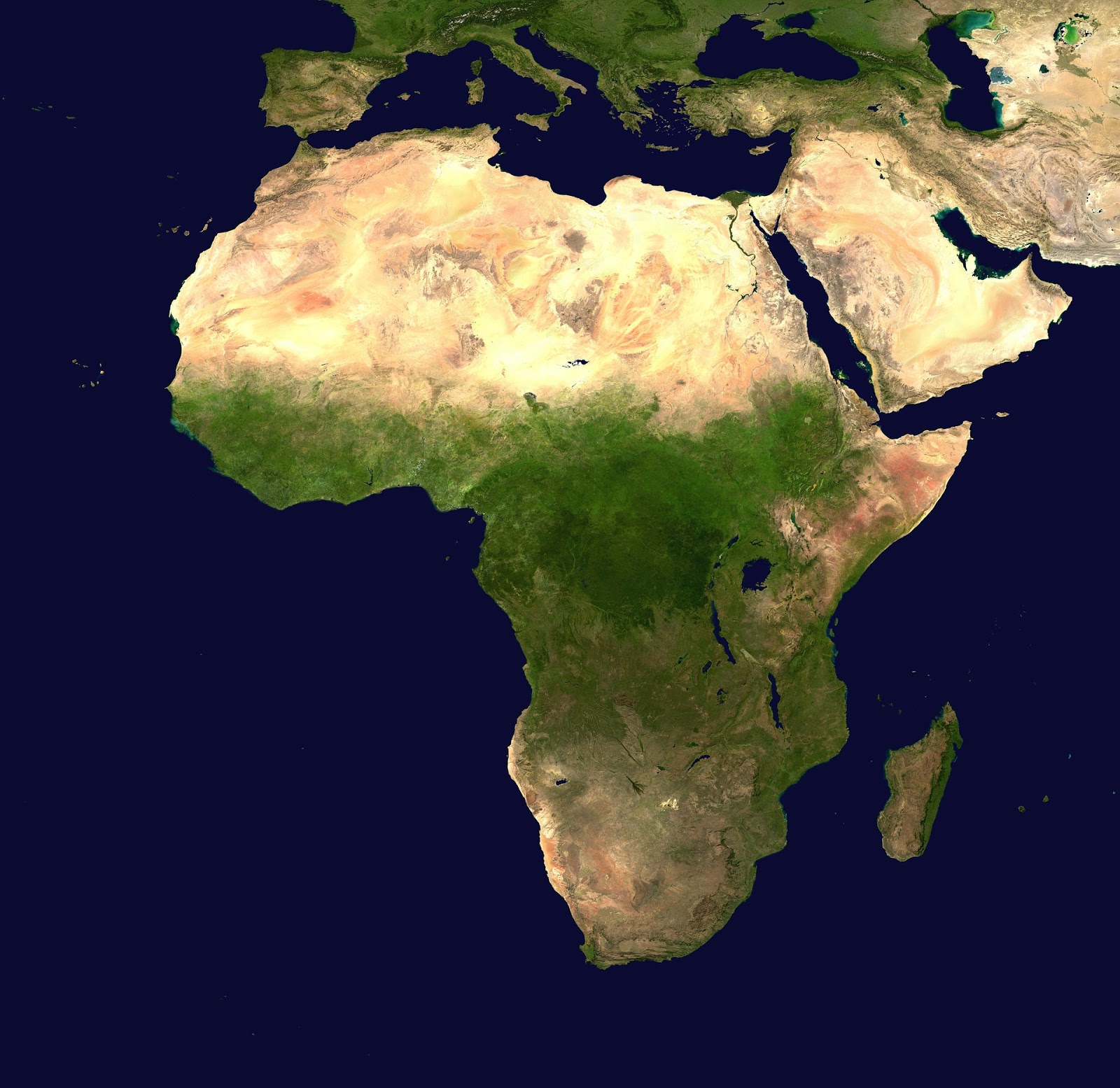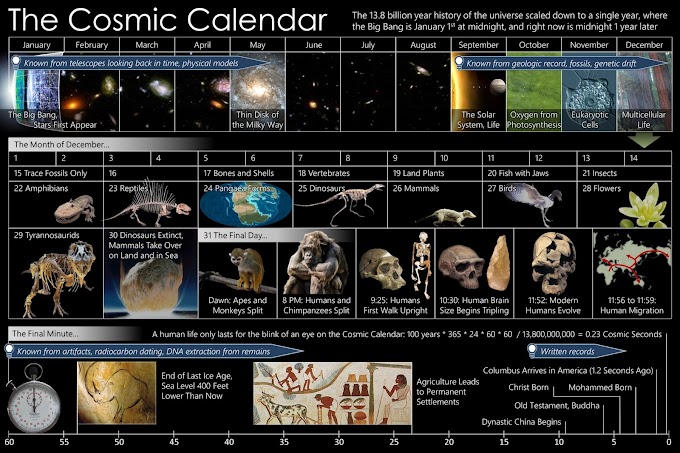For sure, most people have the name of the continents of our planet from an early age, whether they learned it from their families, or of course, at school. Although, what is not so familiar to most people is the origin of these names, both historically and etymologically. So I intend to review these origins in a concise way (with all the different explanations or theories). I will not go back to the remote times of our planet, when there was only the great Pangea continent (which I will address on another occasion), or the difference between continent and tectonic plate, which are commonly mistaken.
By definition, the word continent (from the Latin continere, which means "keep together" and from continens terra, "the continuous lands", refers to a large area of land bounded by oceans on the earth's surface. However, this definition strictly geographic is frequently modified according to historical and cultural criteria.
But before entering to define the origin of each continent, it is necessary to clarify a very important point, about the number of continents on our planet.
The definition of the word continent, in its geographical meaning, is itself ambiguous, or subject to various interpretations, which has led the scientific community to a lack of consensus to establish how many continents there are and what their names are. As a consequence, there are currently different models that defend a different number of continents ranging from 4 to 8 continents. As there is no scientific consensus, there is no single answer. Anyway, among all the answers or models raised (which are six mainly, and that pose different continental divisions, such as the case of an Eurasia, or an Eurafrasia, or the new submerged continent between Oceania and Antarctica called Zealandia), I have selected three answers or models that are the most popular or extended:
- The model of the five continents (based on populated lands): America, Europe, Africa, Asia and Oceania. This is the traditional model, used by the United Nations and the International Olympic Committee.
- The model of the six continents (based on the definition of continent, regardless of population, which includes the previous five plus Antarctica): America, Europe, Africa, Asia, Oceania and Antarctica. This is the most popular in Latin America.
- The model of the seven continents (taking into account Antarctica and America divided into North and South America): North America, South America, Europe, Africa, Asia, Oceania and Antarctica. This model has been suggested and defended mainly by English-speaking countries.
In this analysis, I will take the first of the models, the traditional model. So, the origin of the five continents is as follows:
America:
It is the second largest continent in the world, after Asia, with an area of 42,142,000 km². It occupies a large part of the western hemisphere of the Earth. It extends from the Arctic Ocean in the north to Cape Horn in the south, at the confluence of the Atlantic and Pacific oceans that delimit the continent in the east and west, respectively.
The Spanish baptized these lands with the name of the Indies, because Christopher Columbus thought he had arrived in this country of the East. From 1494 the Spanish Pedro de Anglería began using the expression "New World," to identify this continent.
The name of America is a tribute to the navigator born in Florence, Ialia, Americo (or Amerigo) Vespucci, who in his letters and stories, described the nature of the newly "discovered" continent and the appearance and life of the natives. While it is known that Admiral Christopher Columbus was the first European to reach the continent (at least officially), Vespucci seems to have been the first to realize that the new lands discovered were not part of Asia. In fact, around 1500, he showed that Brazil and the West Indies (which was the name given to the continent since the arrival of Columbus) were part of another continent.
That the name of Americo and not the name of Columbus has been chosen, is precisely due to a treaty drawn up at the beginning of the 16th century by the German Matthias Ringmann called Cosmographiae Introductio, and by a map made in 1507 by the German cartographer of the region of Lorraine (formerly part of the German Empire, now part of France) Martin Waldseemüller, entitled Universalis Cosmographia, a world map that first used the name of America to refer to the New World. Martin Waldseemüller took the name of Americo and transformed it into feminine because the other names of the continents in Latin were feminine.
Cartographers took a few years to generalize the name of America, which occurred in the 17th century, when it was universally admitted to designate the entire western continent.
There are those who argue that the name Amerika had originally been used to refer to an island and then extended to the new continent, but there is no reliable evidence for this theory.
Europe:
Europe is located between the 36º and 70º parallels of north latitude. It extends in the eastern half of the Northern Hemisphere, from the Arctic Ocean by the north, to the Mediterranean Sea by the south. In the west, it reaches the Atlantic Ocean, in the east it borders Asia, from which the Ural Mountains separate it. Europe, the second smallest continent in the world after Oceania, has an area of 10,530,751 km², representing 7% of the emerged lands.
The name of the European continent could present diverse origins: The most widespread opinions suggest that "Europe" could come from the composition of the Greek words Ευρυς ("wide") and Ωπς ("sight, eye).
It could also refer to Greek mythology. Europe was the daughter of Agenor, king of Phenicia who was expelled from the island of Crete by Zeus, the god of the gods of the Greeks; According to legend, Europe played with her friends at the seashore when a white bull arrived whose horns had the shape of the crescent moon. The bull was Zeus who, in love with the girl, devised this ploy to be able to kidnap her and take her to Crete; At one point, Europe climbed into the bull, and it ran and then swam to Crete Island, there, Zeus showed his true nature, and the kidnapped girl fell in love with him. From that union came three children, Minos, Radamantis and Sarpedon.
At first the name of Europe was applied only to the mainland of Greece, as opposed to the Peloponnese and the islands.
Geographically, it was first mentioned in a Greek poem in the 8th century B.C.E. But its use was not widespread until the seventeenth century, according to the Oxford´s Concise Dictionary of World Place Names.
Europe is also associated with the Greek word "eurys", which means "a large region".
Other linguists think that the origin can be derived from the Phoenician word "ereb", which means "setting the sun" or "land of the setting sun"
Asia:
Asia is one of the largest geographic areas on the planet, and extends in the eastern half of the Northern Hemisphere, from the Arctic Ocean by the north, to the Indian Ocean and the west, to the Ural Mountains. With 44,936,000 km², Asia is the largest continent in the world. It is located in the Northern and Eastern Hemispheres, that is why the citizens of Asia are called Easterns or Orientals (including island regions).
Its meaning is said to be unknown, and the Oxford´s Concise Dictionary of World Place Names, lists some theories:
It may come from the word asu which means "east" or "land of the rising sun" in the Akkadian language, a language now extinct from ancient Mesopotamia.
Another theory states that its name is due to the homonymous goddess Asia, oceanic deity fruit of the marriage between Ocean and Thetis, mother of fountains and rivers. Asia would have four children with the titan Iapetus: Atlante, Prometheus, Epimetheus and Mencius. Although this deity is also used to describe the origin of the continent Oceania.
However, the most accepted explanation is that the word "Asia" is originally from the Greek "Ασία", and is attributed to Herodotus of Halicarnassus in the 5th century B.C.E. who used it to refer to the territories east of the Aegean Sea, and the Anatolian peninsula, present-day Turkey, and then during the Medical Wars, to refer to the lands of the Persian Empire.
Apparently, although there are always doubts, Asia comes from Assuwa, the name given by the Hittites to that region, which they inhabited, mentioned by the king of the Hittites when he reported victory in the "Land of Assuva" in 1235 B.C.E. In addition, Assuwa may have come from the tyrannical word Asis, which means "muddy" or "silty", because of the type of terrain on the Anatolian coast.
It is also possible that Assuwa comes from the semitic root Asu, "light" or "dawn", in clear reference to the fact that the Sun rises in the east.
Africa:
Africa is the third largest continent, bordering the Mediterranean Sea to the north, the Atlantic Ocean to the west, and the Red Sea, the Indian Ocean and Asia to the east, through the Suez Canal. It has an area of 30,370,000 square kilometers.
The name of Africa has Roman origin, it was them who baptized this great territory south from Europe. Apparently, the origin of the name is in the Afri tribe (Afri in plural, Afer in singular) that lived in the vicinity of Carthage. The Romans called north of the continent: Africa Terra, or land of the Afri. After the conquest of the city of Carthage, in North Africa, during the Third Punic War (the military confrontation between the Roman Republic and the ancient Phoenician colony of Carthage) in 146 B.C.E, the Romans called the territory Africa for the berber tribe of Afri, who lived in what is now Tunisia and eastern Algeria. Africa would then be the feminine of Africus, the Roman word to refer to Afri.
It is also possible that the name Africa comes from the Greek aphrike (ἀφρίκη), which means, "without cold", a clear reference to the climate of the African continent. Another climate reference option is the Latin word aprica, which means "sunny".
Another theory suggests that it is the name of a goddess represented by a bizarre woman, of oriental appearance, sitting on an elephant and holding the horn of plenty in one hand, and a scorpion in the other.
Oceania:
Oceania is an island continent in Earth, consisting of Australia, Papua New Guinea and New Zealand, as well as the coral and volcanic archipelagos of Micronesia, Polynesia and Melanesia, distributed throughout the Pacific Ocean. Commonly the whole is considered a continent.
The territories of Oceania extend from Southeast Asia through the Pacific Ocean to America. It extends about 8,500,000 square kilometers. It is the smallest of the continents, and is sometimes mistakenly referred to as just Australia.
The origin of the name comes from the Romans, who called it Terra Australis Incognita (unknown land in the south) a territory that, obviously, they did not know. They probably heard about it because of their contacts with the Chinese, but there is no evidence of that.
According to the Greeks, it possibly comes from Oceano (the universal river-god, whose current cleans everything to finally return to itself), a titan and son of Uranus (Heaven) and Gaia (Earth), who ruled the ocean. Or also from the word "Océanie". Océanie comes from the Greek okeanos, "ocean", and referred to the nymphs that protect streams, rivers and fountains, and etymologically had the meaning of "daughters of Oceano".
The name of the continent was proposed by Conrad Malte-Brun, a Danish geographer, in 1812.
When the Spanish discovered what is now Vanuatu Island in 1606, they named it "La Australia del Espiritu Santo" ("The Australia of the Holy Spirit".). It is believed that the British copied the name to refer to their colony, since 1824, as Australia.










0 Comments